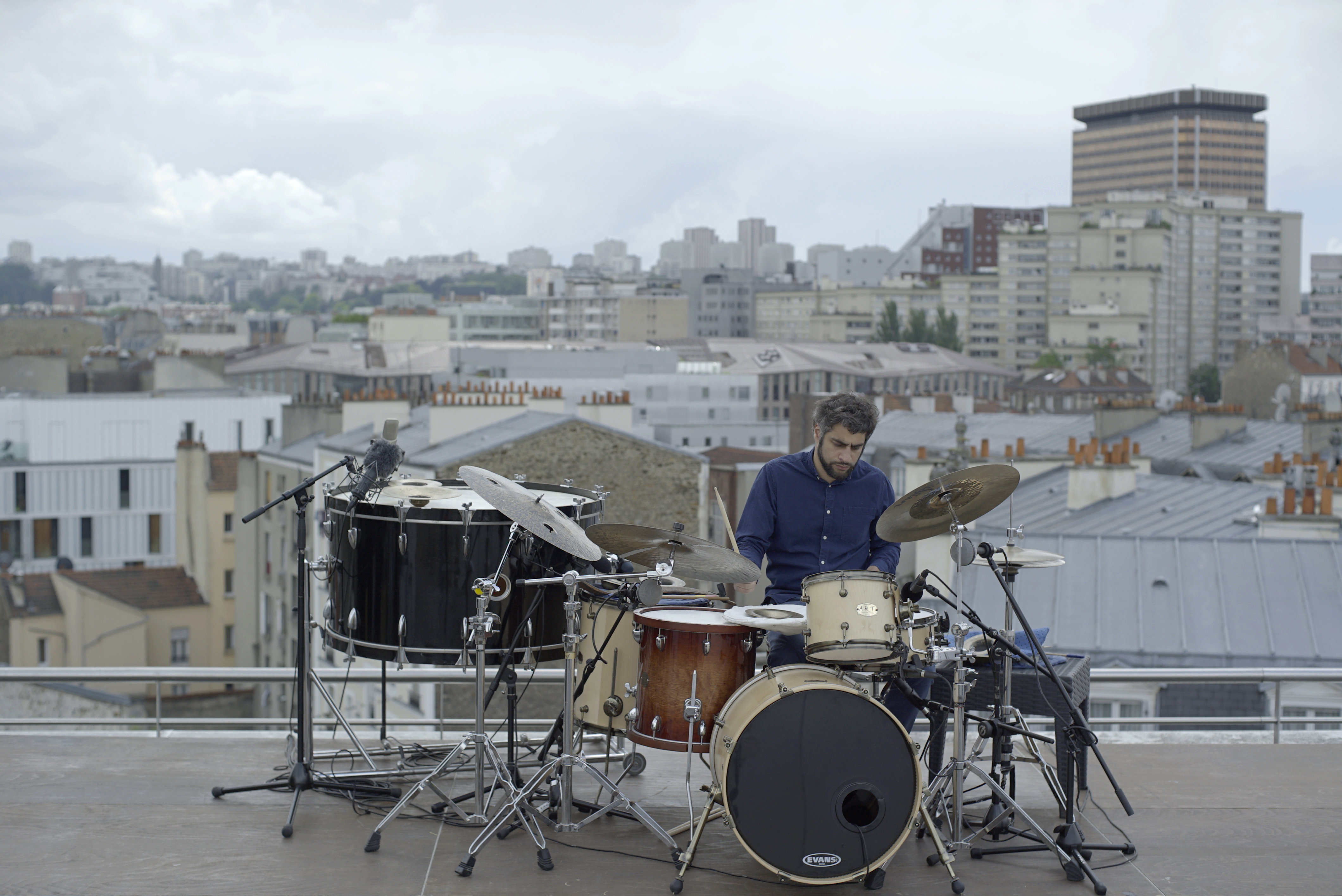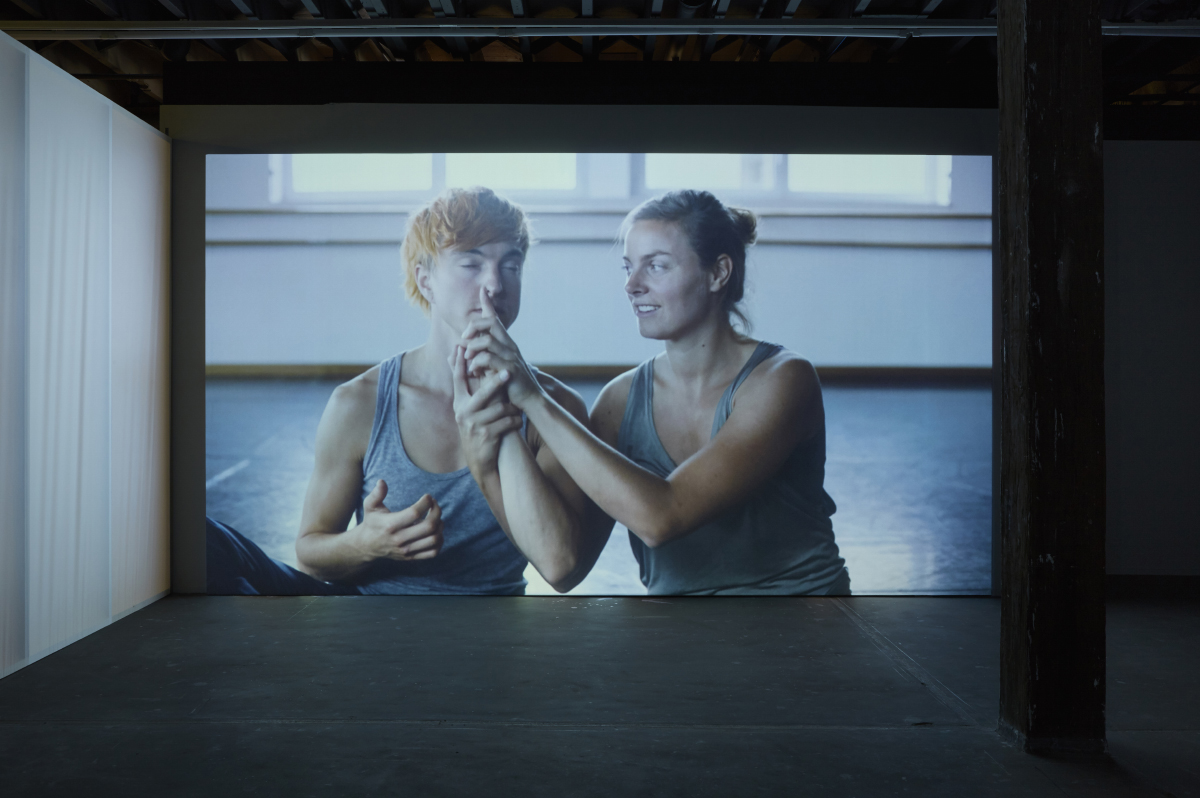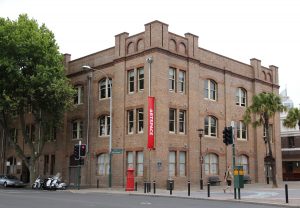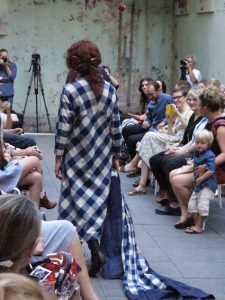SHOWCASE highlights the contemporary artists and curators we work with and whose work you will see in galleries and museums across NSW and beyond in the near future.
Angelica Mesiti is gaining national and international attention as one of Australia’s most eminent artists practicing today. Currently based in Paris, she holds a Master of Fine Arts from UNSW Art + Design. Among other accolades in 2013 she won the Inaugural Ian Potter Moving Image Commission and the Anne Landa Award for Video and New Media Arts.
Mesiti has exhibited extensively at institutions and biennales worldwide, including the 19th Biennale of Sydney, 2014; 13th Istanbul Biennial, 2013; and 1st Kochi-Mizuris Biennale, 2012 as well as at the Palais de Tokyo, Paris; Centre Pompidou, Paris; Barbican Centre, London; Jewish Museum, New York; Tate Modern, London, Haus der Kulturen der Welt, Berlin, Museo Reina Sofia, Madrid and the Museum of Contemporary Art Australia.
Mesiti works primarily with video and installation, incorporating performance, dance and musicality to explore ideas of community, cultural tradition and spirituality. She is interested in performed cultural traditions in a state of transformation, or at risk of extinction due to complex social, economic or cultural shifts.
Rachel Arndt, M&G NSW’s Gallery Programs and Touring Exhibitions Manager spoke with Angelica about her work in Relay League, curated and developed by Artspace, Sydney and on show at The Lock-Up from 12 August – 17 September 2017.
You can also see Angelica’s work in People Like Us and Moving Histories // Future Projections, currently on the road.
RA: Relay League takes its starting point from the final Morse code message sent from the French Navy, ‘Calling all. This is our last cry before our eternal silence’. Why did this interest you?
I have been living in France for over 7 years now. I began to have the idea for this work in the summer of 2015 and I think it is important to acknowledge the political environment at that time. It was the height of the refugee crisis in Europe – we were all, across the globe, being confronted with a huge amount of media imagery about the loss of life at sea and some of these images were very powerful politically. So within that, I began thinking about distress signals, in particular distress signals at sea and methods of communication in a crisis situation. Alongside that in 2015 we also experienced terrorist attacks in January and November in France. From this, the government enforced a state of emergency that was only intended for three months and is still in place now. That sense of a state of crisis was a very present feeling that I was aware of. Formally this is a work that looks at translation and adapted methods of communication and survival of communication but, as with most of my work, that interest is there on the surface layer but there is usually politics involved.
So, when I came across this phrase in my reading of the final message by the French Navy in 1997 before they decommissioned Morse code, it really hit me because it felt like it spoke across a lot of things that interested me. This is a language that has been constructed specifically for moments of distress, for crisis, for rescue. Here, the poetic nature of the phrase itself felt very unexpected and the other thing that struck me was the fact that this message, rather than signal the distress of a victim at sea it was actually signaling its own imminent expiration, so in a way that final signal was the first time that the language had ever spoken in its own voice about itself. I felt that it was an interesting phrase to use as a starting off point for a work. I was interested in the vulnerable body and that impotent, mute feeling many have in the current political climate. So, this coded, defunct language sending a distress signal that no-one receives and no-one responds to felt metaphorical apt.
RA: Relay League explores ways of communicating outside of spoken language. And your previous works such as Rapture (silent anthem) and Play explore the communicative and expressive value of sound as experienced by different cultures both traditionally and in the present day. What interests you in non-verbal communication and alternative methods of expression?
It’s one of those things where one thing leads to another. Sometimes I wonder if coming from a background where multiple languages were spoken in the home and I didn’t have full comprehension or fluency in Italian means that you pick up on different cues to form understanding. I think that is probably a commonly held experience.
Also, I trained as a dancer, which is a way of working with your body a lot more. Also, as an artist, I have had to learn to write and communicate verbally about my work but a lot of being an artist is doing things because you don’t know how to put it into words, otherwise we would be writers. So, I feel it is pretty intrinsically linked to the forms of expression I am already engaged with; dance, music, visual art, they are all non-verbal methods. Also, coming out of making The Colour of Saying there was a lot of thinking about translation and different methods of non-verbal communication, which has been a concern for a while.
RA: Relay League explores movement on a number of levels – within the videos themselves but also in how the visitor experiences the work, such as the journey made from one screen to the next. What would you like the visitor to physically experience when moving through the gallery space?
I see the show as a geography of experience. I have been working with multi screen video installation for some time and I am particularly interested in the viewers experience in a kind of participatory relationship to the video onscreen so, from the outset I was thinking very much, there is a French word that I like to use ‘parcours’, of a kind of a pathway or tour or some kind of journey or experience through the work. Relay league is the term for a telegraphic system of transmission, from one transmission point to a receiver and from that to another receiver. This is how I have tried to construct this installation, so there is a journey of this message as it passes through. It also adapts and changes as it moves through different forms, in relation to the body.
You see the three videos unfold in the space. Each moment within the show is a further translation or abstraction or dissection of the source phrase from Morse code. The architectural space has been constructed in a way to encourage bleed from the
soundtrack and illumination of the videos. The first and the last video have the exact same soundtrack and they play in sync so, you start at one end of the gallery and you walk to the other and as you are walking that sound will diminish but as you approach the next screen will increase in volume.
The dividing walls are made of a plastic translucent film, which means that you can see light and shade through them. I wanted to create this porous membrane where you’re separated by things but you can perceive what is beyond and that sort of leads you through the experience.
Also, the way that Sindri sees is in light and shade, in contrast and blurred images, the way that you will see things on the other side of the screen. So it is kind of like a gesture towards this way of seeing.

Relay League was curated and developed by Artspace and is touring nationally with Museums & Galleries of NSW. This project has been assisted by the Australian Government through the Australia Council, its arts funding and advisory body. The development and presentation of Relay League is supported by Commissioning Partner the Keir Foundation. Relay League was produced with the support of C ND National de la Danse, Paris and University of New South Wales Art & Design. Relay League will be accompanied by a book published by Schwartz City and designed by Formist.







